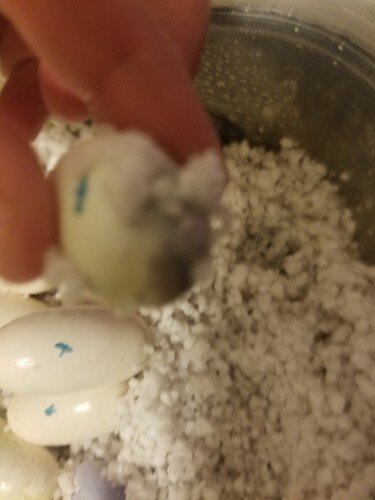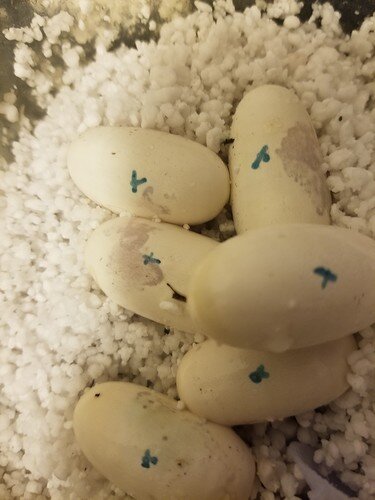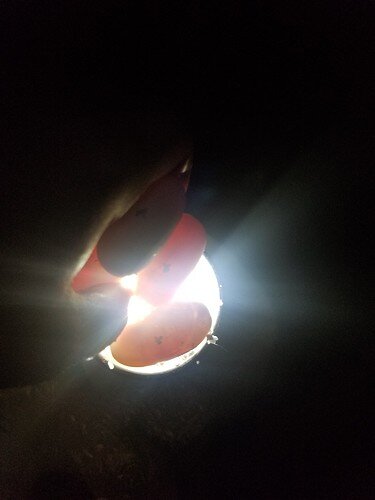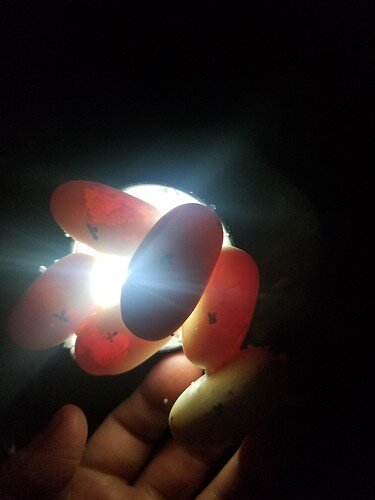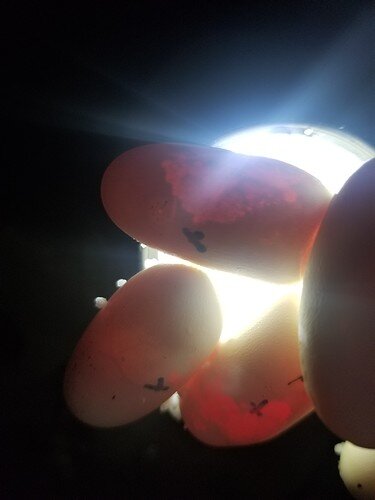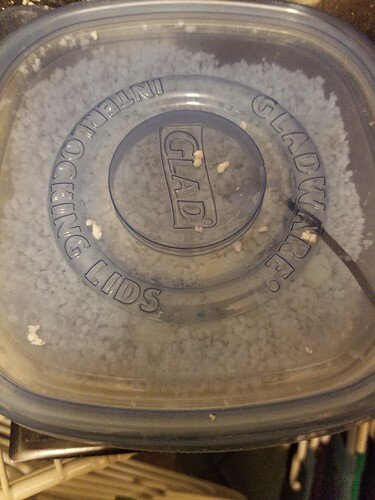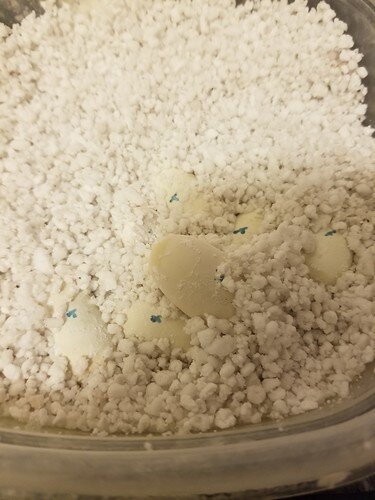Went to check on my eggs this afternoon to our first and only cornsnake clutch this year and found troubling things. I don’t think I’ve lost the entire clutch yet bu lt we’re not looking Good. Going to get some antifungal Gold Bond powder now to put on the patches and hope.
Any advice could be good. Especially on what caused this.
3 Likes
How much ventilation is in the container? Also what is the approximate humidity in the egg box?
1 Like
Humidity is high but don’t have an exact number. Vebelation wise there are two small holes on either side of the box and the thermostat probe props the lid open in the corner. I do an “open the top” check maybe 3 times a week where I open the container, look but don’t touch, and close it back.
1 Like
I also really quickly candles using my big mag flashlight and this is the results. Only the little one is black inside everyone else looks like this. So they aren’t gone yet?
1 Like
I was thinking it was from a lack of ventilation but if you’re opening it ~3x a week then it probably isn’t. I would say there’s still embryos still alive. Most of the time the mold doesn’t cause too harmful effects instantly but it’s still important to quickly remove it. Hopefully the powder works and the eggs hatch good. 
4 Likes
It looks like there is condensation dripping on them
2 Likes
That’s actually a likely problem. I didn’t think about windowing. If it’s condensation I’d recommend wiping the lid when you open it or putting a small wedge (eg. stone) under one side so the water rolls down and falls on the edge instead of the eggs.
4 Likes
How would I tilt it? Would poking holes in the lid help? Paper towels over the eggs?
1 Like
Ended up burying the eggs a lot more than I did before with antifungal powder on them as best I could. Then set them off center to the middle of the container and used the thermostat probe cord to try and tilt the lid away from them. In the picture with the lid the eggs are closest to the bottom of the Pic and the condensation has been happening more towards the middle.
3 Likes
More ventilation could help a little but if you wanted to tilt it you can put almost anything under one side. You could just cut cardboard pieces, glue them together (optional but it would make things easier), and then put them under one side. Since the container would be tilted the water would roll down and hit the edge instead of falling on the eggs. You could also tape a paper towel to the lid to absorb the condensation.
4 Likes
If it is tilted wouldn’t that risk drowning the embryos since they can’t be moved from the position they settled in? I feel like a larger container (with a flat lid) with something keeping them from touching the perlite would be easier. Not sure if burying them in something with moisture is the best thing either since you are trying to keep them from being too moist. Taping a paper towel or two to the lid would likely be better than tilting it.
1 Like
The perlite itself isnt direct water contact vs the literal drops of water falling on them. If I notice things not improving I will be sacrificing a slightly bigger Tupperware with a flat lid for sure. The whole burying (and antifungal powder) came from my personal friend who has bred corns for several years. Her suggestion was to bury them to keep the direct water contact away. I have also slightly, just barely, tilted it away from the eggs but not enough that I think it would drown them. It’s like not even an inch, but enough to hopefully redirect water drops.
It would only be tilted a tiny bit, just enough to be visibly tilted. If it were tilted enough it would be a good idea to move the eggs so they still faced up but that isn’t usually necessary.
2 Likes
So again a run down of changes
- Antifungal powder on exposed part of eggs
- Buried eggs in substrate more to protect
- Added more perlite to adjust moisture of substrate
- Left lid more propped open
- Placed paper towel over underside of lid to absorb excess moisture
- Eggs place off center away from where water will accumulate and possibly drop
- Slightly tilted entire container to encourage water going away from eggs
Anymore advice would be greatly appreciated. In a week I plan on posting an update. So far I’m thinking I’ll only end up losing the tiniest egg since over 50% of it is molded and didn’t show much of anything on candeling. It is separated from the rest of the eggs to prevent anything more possibly spreading.
Out of seven eggs five definitely have some amount of molding and 3 look like I could end up eventually losing if I don’t get this under control.
3 Likes
change that lid. the concave center is allowing the droplets to fall in the middle.
IMO cling wrap with a few thumbtack holes in it would work better
edit- didnt see you placed a paper towel to stop it from dripping. though be careful as that paper towel will mold up.
3 Likes
Yes they are getting wet. Use press and seal and check the air flow/heat distribution in your incubator - condensation forms when there is a temperature difference between your tub and the outside / top and bottom of the tub etc. Additionally exercise caution when lifting the lid and wipe away excess condensation as it forms- which should not be very quickly in a stable environment. I would add a sprinkling of dry perlite on top of your media and set the eggs on that, hoping that they will dry out before more mold sets in or the eggs drown. Good luck.
2 Likes
I’ll add, if you can accommodate it - a larger egg box with more substrate mass is generally less prone to changes? Keep us posted!
1 Like
So a small update. Condensation is still forming at the top of the lid, but not as bad and don’t think any of it is getting on the eggs. Put a piece of paper towel between lid and eggs to just see how much builds in a 24hr period.
Of the five eggs that had mold, two still have significant amounts but one of them still looks alive when candleing. The other is either to small to really see or it’s gone bad because I can’t see through it like the other to see veins. This was the egg that was half the size of the others so not sure if it’s dead or what.
I unburied the ones that are cleared of mold since I want to actually visually see the entire egg and not just a small window. Perlite on surface feels warm and dry while sticking my finger deeper still feels moist. I’m not sure if the totally dry on top perlite is good but considering moisture is still building up on the lid it must still be overall okay?
2 Likes
I believe pereilite is meant to be that way. The water sinks towards the bottom and slowly evaporates at a constant rate up through it.
3 Likes
Sometimes an egg that was bad from the start can develop that kind of look/be more prone to water damage anyway. In that case there’s not anything you could have done. Good luck with the rest though, hope things work out!
3 Likes
